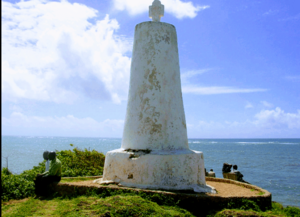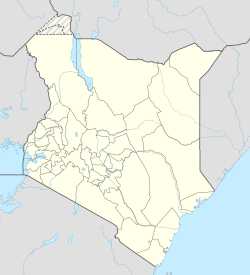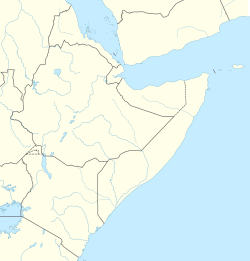Malindi facts for kids
Quick facts for kids
Malindi
|
|
|---|---|
|
Municipality
|
|

Vasco da Gama Pillar and Indian Ocean
|
|
| Country | |
| County | Kilifi County |
| Founded | 13th – 14th century |
| Re-settled | 1861 |
| Population
(2019)
|
|
| • Total | 119,859 |
| Time zone | UTC+3 (EAT) |
Malindi is a lively town located on the coast of Kenya, right by the Indian Ocean. It sits on Malindi Bay, where the Sabaki River meets the sea. This town is about 120 kilometers northeast of Mombasa.
In 2019, Malindi had a population of nearly 120,000 people. It is the biggest town in Kilifi County.
Contents
Discovering Malindi: A Coastal Gem
Malindi is a popular place, especially for tourists from Italy. Many people visit to enjoy its beautiful beaches and learn about its rich history.
What to See and Do in Malindi
There are several important historical sites to explore in Malindi. These include the Vasco da Gama Pillar, the Portuguese Chapel, and the House of Columns. You can also visit the Malindi Museum Heritage Complex to learn more about the area.
Malindi has its own airport for local flights. A main highway connects it to Mombasa and Lamu. Nearby, you can find the town of Watamu and the ancient Gedi Ruins. The Sabaki River flows into the ocean just north of Malindi.
Nature and Culture in Malindi
South of Malindi, you'll find the Watamu and Malindi Marine National Park. These parks protect the amazing marine life along the coast. The area is also famous for its traditional Swahili architecture, which you can see in many buildings. Most people living in Malindi follow the Muslim faith.
Malindi is also home to the Broglio Space Centre. This is an important space research station.
Malindi's Rich History
Malindi grew into a significant town as part of the Swahili Civilization. This happened between the 5th and 10th centuries. Early settlers were farmers who worked with iron and built houses from wood and palm leaves. They spoke a local language called KiSwahili.
Early Trade and Growth
As trade routes across the Indian Ocean became more active, Malindi grew larger. People started trading with merchants from places like Somalia, Egypt, and India. From the 11th century, Swahili people became important traders. They built walled towns and houses from coral. Many leaders also became Muslim and spoke Arabic.
The Malindi Kingdom was formed around 850 AD. The city of Malindi was first located a bit north of where it is today. It was destroyed around 1000 AD but later recovered and became prosperous in the 1200s.
First Written Records
The first written mention of Malindi might be from a geographer named Abu al-Fida in the 13th century. He described Malindi as being south of a river that started far away in the mountains. This river was likely the Galana River. This shows that Malindi has been a Swahili settlement since at least the 1200s.
Malindi was once a major port city, similar to Mombasa. In 1414, a Chinese explorer named Zheng He visited Malindi with his large fleet. The ruler of Malindi even sent a giraffe as a gift back to China with Zheng He's ships!
Portuguese Arrival and Alliance
In 1498, the Portuguese explorer Vasco da Gama arrived in Malindi. He signed a trade agreement and found a guide to help him sail to India. He also put up a stone pillar, which is now known as the Vasco da Gama Pillar. The Sultan of Malindi welcomed Vasco da Gama warmly, which was different from the unfriendly welcome he got in Mombasa. This pillar is now a popular spot for tourists.
By 1498, Malindi was a thriving town with 5,000 to 10,000 people. Most people were Muslim. The town was led by a group of wealthy family heads called wazee. They chose a chief, or mwenye mui, to speak for them. The Portuguese mistakenly called these chiefs "Kings."
Malindi became wealthy by exporting things like ivory, rhino horns, coconuts, and rice. Before the Portuguese arrived, Malindi was a strong regional power, but not as big as Mombasa or Kilwa.
Malindi and Portugal's Partnership
In 1499, the Portuguese set up a trading post in Malindi. The wazee of Malindi welcomed them, hoping to use Portugal's military strength against their rivals in Mombasa. Malindi helped Portugal conquer Kilwa and Mombasa in 1505. This alliance helped Malindi grow even more. Many Swahili, Arab, Persian, and Indian traders and workers moved to the powerful city.
Malindi remained the main base for Portuguese activities in East Africa until 1593. At that time, the Portuguese moved their main base to Mombasa. This happened with the help of the Segeju people and the Sheikh of Malindi. The Sheikh of Malindi then moved his court to Mombasa and ruled there. He invited his Portuguese allies to build a fort in Mombasa.
Decline and Rebirth
After the Portuguese left, Malindi slowly declined. By the late 17th century, it had almost disappeared. An old map from 1823 showed that there were "no signs of the once splendid city of Melinda" except for Vasco da Gama's Pillar. In 1845, a visitor found the town overgrown and empty.
A Portuguese chapel with a graveyard was built before 1542. Many old buildings with Swahili architecture still exist, including the Juma Mosque.
Malindi was rebuilt by Sultan Majid of Zanzibar in 1861. For a while, it was a place where people were sadly bought and sold as slaves. In 1890, the British took control, and the buying and selling of slaves was stopped. This caused a big drop in farming.
At the start of the 20th century, Malindi had few industries. People made mats and bags, pressed sesame seeds for oil, and made a local drink called tembo. Malindi officially became a town in 1903. By 1913, its population was around 1,148 people.
Modern Malindi's Development
Malindi saw a boost in trade after World War I, until a famine in 1925. Exports grew to £26,000 by 1924. Europeans started returning in the 1930s and bought land. Some, like Commander Lawford, opened the first hotels. These hotels became the start of Malindi's important tourism industry.
During World War II, Malindi was one of only two towns in East Africa bombed by the Italians. This happened on October 24, 1940. After this, allied soldiers were stationed in the town until the war ended. After World War II, Malindi began to grow into the popular resort town it is today.
Malindi's Climate
Malindi has a tropical dry savanna climate. This means it is generally hot all year round. It has a wet season and a dry season.
| Climate data for Malindi (extremes 1892–present) | |||||||||||||
|---|---|---|---|---|---|---|---|---|---|---|---|---|---|
| Month | Jan | Feb | Mar | Apr | May | Jun | Jul | Aug | Sep | Oct | Nov | Dec | Year |
| Record high °C (°F) | 34.0 (93.2) |
34.0 (93.2) |
34.5 (94.1) |
39.0 (102.2) |
32.2 (90.0) |
30.5 (86.9) |
30.8 (87.4) |
29.8 (85.6) |
32.0 (89.6) |
32.0 (89.6) |
34.1 (93.4) |
33.0 (91.4) |
39.0 (102.2) |
| Mean daily maximum °C (°F) | 30.8 (87.4) |
30.9 (87.6) |
31.8 (89.2) |
31.1 (88.0) |
28.8 (83.8) |
27.9 (82.2) |
27.3 (81.1) |
27.4 (81.3) |
28.3 (82.9) |
29.6 (85.3) |
30.5 (86.9) |
30.8 (87.4) |
29.6 (85.3) |
| Mean daily minimum °C (°F) | 23.3 (73.9) |
23.5 (74.3) |
23.9 (75.0) |
24.2 (75.6) |
23.4 (74.1) |
22.6 (72.7) |
22.0 (71.6) |
21.6 (70.9) |
21.7 (71.1) |
22.2 (72.0) |
22.8 (73.0) |
23.4 (74.1) |
22.9 (73.2) |
| Record low °C (°F) | 20.0 (68.0) |
19.6 (67.3) |
21.0 (69.8) |
20.8 (69.4) |
21.0 (69.8) |
19.5 (67.1) |
18.6 (65.5) |
17.0 (62.6) |
17.2 (63.0) |
19.0 (66.2) |
19.0 (66.2) |
21.0 (69.8) |
17.0 (62.6) |
| Average precipitation mm (inches) | 11 (0.4) |
17 (0.7) |
36 (1.4) |
163 (6.4) |
298 (11.7) |
154 (6.1) |
91 (3.6) |
64 (2.5) |
47 (1.9) |
68 (2.7) |
75 (3.0) |
35 (1.4) |
1,059 (41.7) |
| Average precipitation days | 2 | 2 | 3 | 11 | 17 | 12 | 12 | 9 | 7 | 6 | 6 | 3 | 90 |
| Source 1: World Meteorological Organization | |||||||||||||
| Source 2: Meteo Climat (record highs and lows) | |||||||||||||
How Malindi is Governed
Malindi is part of Kilifi County. This change happened after a new constitution was passed in Kenya in August 2010.
Malindi has a municipal council made up of thirteen smaller areas called wards. These wards include Barani, Ganda/Mkaumoto, Gede, Kijiwetanga, Madunguni, Malimo, Malindi Central, Malindi North, Maweni, Shella, and Watamu Town. All of these wards are located within the larger Malindi Constituency.
Images for kids
See also
 In Spanish: Malindi para niños
In Spanish: Malindi para niños









